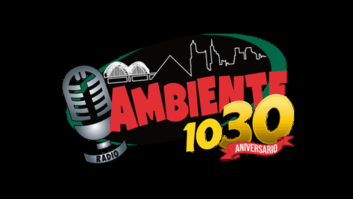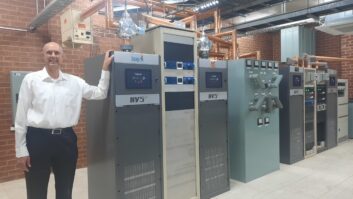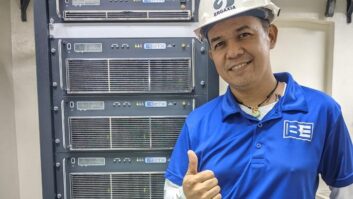This is one in a series of photographs of radio broadcast facilities and history from the collection of Jim Hawkins.
(click thumbnail)Front paneling of the RCA BTA-50F 50 kW Transmitter
The biggest thrill I experienced when I started to visit broadcast transmitter facilities during the 1960s was the physical beauty of the equipment and the ambience of power.
The older tube transmitters offered a surround sound of powerful blowers, large coils and tubes singing to the modulation, and the occasional excitement of bells ringing when the transmitter shut itself down, due to anything from a rat crawling onto the antenna to the powerful strike of lightning.
The accompanying photo is of the RCA BTA-50F at what used to be WKNR in Cleveland. The designer of RCA’s art deco beauties was Raymond Lowey, also known for his designs of train locomotives, furniture, buildings, etc.
Going somewhere
The front, with its glass and chrome, might remind you of a train’s passenger car, which gives the perception of “going somewhere.” Peering into the glass, you are treated with the sight of orange glowing 5671 tubes with hundreds of air-cooling fins around the anode.
The filament for each of those tubes alone requires about 3,000 watts of power to light (285V, 11A). The 5671s were extremely rugged and overrated but became popular for 50 kW transmitter use after World War II. They were manufactured in large quantities for induction heating for the manufacture of steel and iron war related parts. This made large quantities available for transmitters after the war.
Upon entering the area behind the transmitter through a door, the rear of the transmitter is plain, but each cubicle can be opened for maintenance. The driver for the pair of 5671 RF final tubes is an air-cooled 892R, also commonly used for the output stages of the lower-power 5 kW station transmitters of that vintage.
Scouting behind the transmitter, you will see the huge transformers for the anode supply and the modulator. The modulation transformer is about 5-6 feet high and buzzes away with the sound of the modulation. The six mercury vapor rectifiers for three-phase full wave rectification were replaced with solid state rectifier stacks long ago.
Our host was John Hovanec, chief engineer, when we took the tour on the Memorial Day weekend of 2001. The BTA-50F is still fully operational, but was auxiliary to a Harris MW-50. The station call letters are now WHK. John was kind enough to fire up the transmitter into a dummy load so we could experience the sights and sounds of the live transmitter.
It is worth mentioning Henry Dryfuss, an industrial designer whose talent was used for Western Electric transmitters, particularly the “Transview” design in the late 1940s.
You can see the full tour of this site at www.jphawkins.com/wknr.html








